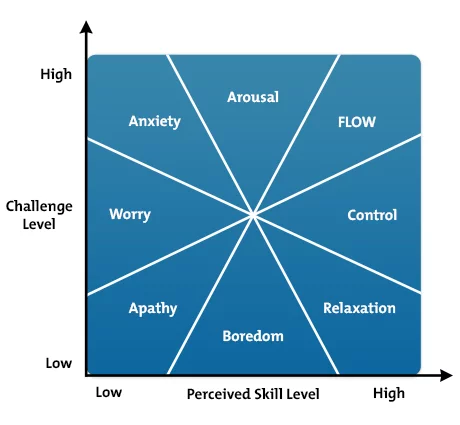
We're getting close to the end of the Journey to Agile Performance management so this may seem like a strange time to bring up the topic of goal setting. After all isn't that how everything worthwhile begins, by setting goals to achieve what you want?
Embarking on this journey we have a destination - that's a goal, and a time frame, another goal, and probably a budget, that's another goal. So our journey to Agile Performance Management ought to have at least these 3 goals around it right? Destination, Time and Budget.
Perhaps not!
What if we thought of these not as goals but as constraints?
Are your goals holding you back?
Does it matter if we arrive a day late because we stopped off at the scenic lookout?
What if our actual destination changed because we expanded our horizons and saw a better place to drive to?
If we can pay a toll for a less arduous journey, should we endure a painful one instead, just to come within budget?
Hopefully, you'd agree that sticking to goals of destination, time and budget would not have made the journey a better one.
In our experience so many of our work goals are based on things that don't make business performance or individual performance better too.
1. Improve sales by 20% YOY by December 2017
2. Reduce cost by 5% quarter on quarter throughout the fiscal year
3. Launch product X by Quarter 3,
4. .... and so on ..... with 47 more goals like this listed here as suggested ways to 'motivate'
The fallacy of target setting
Where do these numbers and time frames come from? At best it's a game of cat and mouse, and at worst, it's an exercise in mental cruelty.
Improve sales by 20% might be a 'stretch' goal set by corporate management. No one believes in the 20% but by asking everyone for 20% management might get 16% and that will do very nicely thanks. On the other hand it might result from bottom up negotiation by a sales person, knowing they have a deal in the bag that will get them above target, out of any risk and into performance accelerators. In other environments it might be fear based or 'because that's what management wanted to see'.
No matter how the number came about, it's guaranteed to be the wrong number rather than the right one. Worse, by setting arbitrary thresholds for goals you're either demotivating through too high an expectation, or condoning mediocrity by accepting less than what's actually possible.
This is the greatest flaw with goals and to handle it, we could just get better at goal setting. That hasn't really happened though since the 1950's when goals became the accepted norm of performance management, so instead perhaps it's time to look at some alternatives to goals.
If you do need to set goals like this, read about the ‘low water mark’ for agile goal setting.
Alternative to traditional goal setting
We've been working with some clients on alternative methods to drive performance instead of goals. As a result we have 2 alternatives to recommend.
Value directed behaviour
The first alternative to goals is motivation through values that guide behaviours. This assumes that people will be passionate about living their values if you allow them to, and that the behaviours encouraged by doing this will indirectly lead to high personal performance and high business performance.
The team at Pay Compliment have personal experience of this as we run our business based on values rather than goals.
As CEO I trust that each of the team will do their best work when guided by their values. Our selection process means they are on our team in the first place because their values match with ours.
I believe our staff and customers are loyal because they respect our value system and know that we will always respond in a predictable way.
Loyal staff impact business performance through discretionary effort, intrinsic knowledge, productive relationships with others and avoidance of recruiting costs and added costs of attrition.
Loyal customers impact business performance through recurring revenue, incremental consumption of services, referral and advocacy and lower sales and servicing cost.
If you don’t believe a value based approach can scale, take a look at Nestlé. Nestlé have for the first time ever set a (conservative) operating margin goal in 2017. They've done this only as a result of activist investors who have insisted upon it. Prior to this Nestle have been guided by Corporate Business Principles, in which “Leadership and Personal Responsibility” are singled out as key operational principles.
http://www.nestle.com/asset-library/documents/library/documents/people/management-leadership-principles-en.pdf
"Through the pragmatic combination of a clear long-term vision and the achievement of day-to-day goals, the application of these principles everywhere, and at all times, becomes a living expression of our corporate culture and a key component of our future success" Paul Bulcke Chairman and former CEO Nestlé.
Best Next Actions
The quote from Paul Bulcke brings us to another alternative to goals; best next actions.
Once again we use this approach at Pay Compliment. It works well alongside our value system.
Each day or every few days, leaders discuss priorities with each staff member and agree the best next action to achieve those priorities.
For example, we recently discussed that we wanted to get more users to upload profile pictures on our platform.
In goal setting mode we could have set a goal to "Increase profile picture upload from x to y by December" and assigned that out to someone to be held to account for it. We could have had robust debate over several days over the right value for Y and who should have this responsibility.
Instead, we asked a developer to research the psychology of profile pictures (yes that is a thing), and propose our best next action. Within a few hours the change was made, and we are in a position to measure the effect. If that change improves profile picture upload, but not enough, we may adjust the approach or try something different. In the meantime, our new best next action is to measure the effect.
Best next actions keep focus and attention on the things that matter most, and avoid distraction and diversion.
By identifying best next actions, work gets done at a rapid pace, and adjustments get made accounting for prevailing circumstances in the moment.
By combining a good understanding of our people with a good understanding of the needs of the business we are able to maximise their conditions for success and consequently our business results.

Using the concept of flow, our aim is to keep the challenge level and skill level high to move at a fast pace with just in time learning where new skills need to be acquired.
A best next action might involve changing the approach to a problem, shifting work assignments between people, bringing in specialist skills to support an activity, revisiting the objective, and so on. The conversation leads to the decision on what strategy to take.
The myth of multi-tasking
Not convinced you can manage without the safety net of cascaded goals? What if there was evidence to show there's inbuilt waste for every worker that needs to juggle progression and reporting of several goals concurrently.
Studies by the American Psychological Association suggest that up to 40% of productivity is lost by people who are multi-tasking, and this is mainly due to the high cost of task switching.
When we have more than 1 focus, we have to expend mental and physical effort prioritising, preparing, re-orientating, re-assessing and restarting from where we left off.
Multiply this by your workforce and this is a huge cost.
(Number of workers * Average Salary) * 0.4 = Productivity cost of poor focus
Productivity is not the only cost of multi-tasking. Subtract another 10% - 20% of productivity for rework that occurs when multiple concurrent tracks of work are affected by a changed priority, new data, and invalid assumption or miscommunication.
Whilst making progress serially may at first glance appear to be slower than lots of parallel workstreams, the efficiency costs soon erode the benefit of shorter timeframes.
Summing up
There are alternatives to goals to manage performance, and there is an increasing movement to using non-goal alternatives due to the lessening of stress and the improvement to happiness that goes with that.
However, goals are ingrained in corporate management practices and will only slowly change to become one of many options rather than the only option for performance management.
If you're interested to learn more about the downsides and alternatives to goal setting here are some references.
Starting with a debate between Leo Babauta and Tim Ferris and more points of view in these articles
https://www.psychologytoday.com/blog/wired-success/201407/why-goal-setting-doesnt-work
https://www.theminimalists.com/no-goals/
https://zenhabits.net/goal-less/
If you're interested to try alternatives to goal setting for performance management the team at Pay Compliment would be excited to help with advice, expertise and a platform to turn everyday observations into better performance (with and without goals).